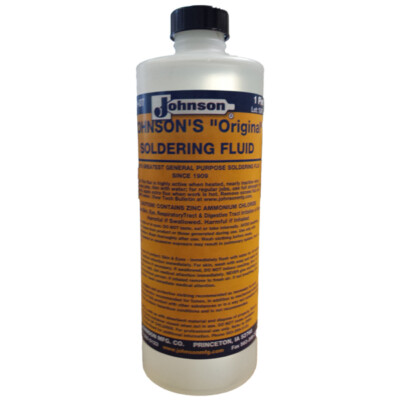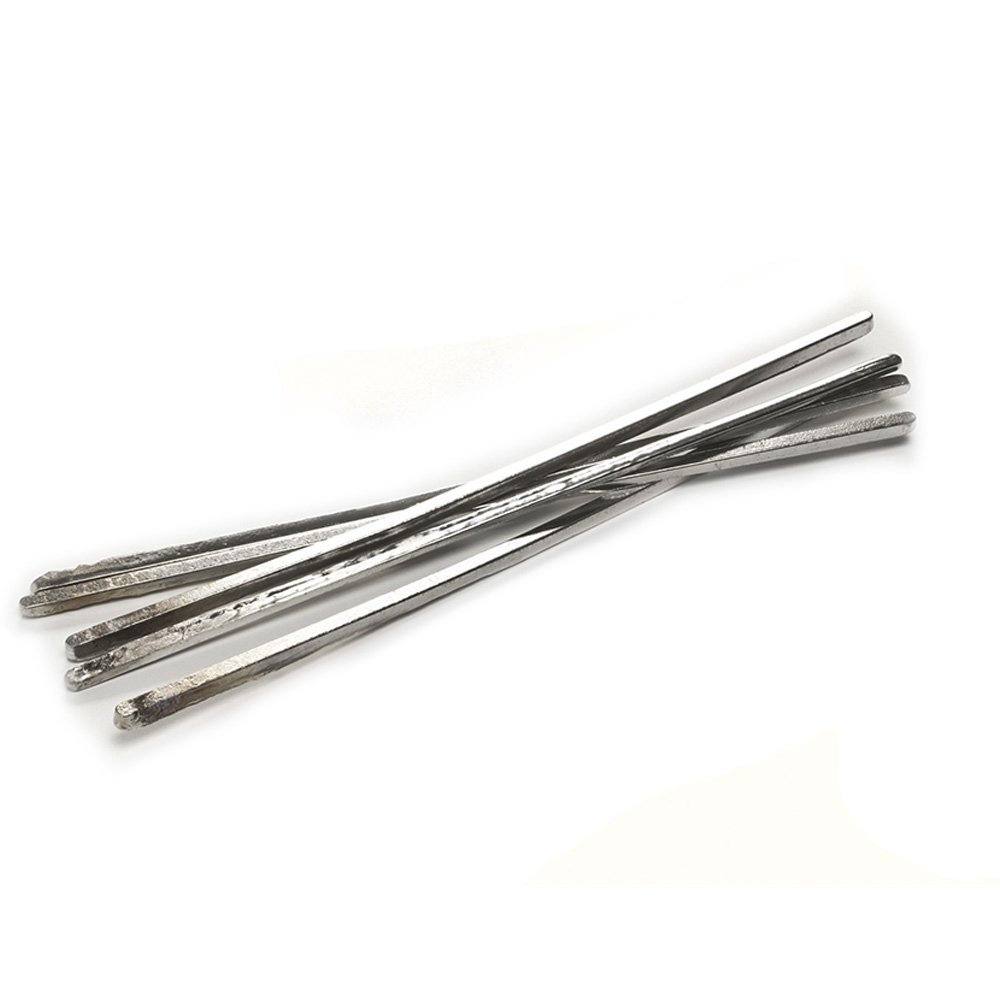1. Why do some soldering tips wear out faster than others?
- Lead free solder (pure tin) will wear out your copper tips about twice as fast as 50/50 solder. Tin has a higher melting temperature than lead, so you need to use higher heat when soldering with lead free alloy
- Forged coppers will last longer than copper tips made from bar stock
- Tinning your soldering coppers will help prevent tip erosion
- Coated soldering tips (long life tips) will significantly increase the tip life and are maintenance free
- Johnson MFG PDF

2. Does the type of flux makes a difference?
- Yes! Specific fluxes are made for soldering specific materials
- Flux removes the light oxide film
- The flux protects the surface from oxidation during heat transfer
- Acid based fluxes are the most common
-
Sale!

Express Flux for Oxidized Metals
Details1 customer reviews$18.00 – $96.00 -

Johnson Original Soldering Flux
Details $12.00 -
Sale!

Express Flux for New Metals
Details2 customer reviews$18.00 – $96.00 -

Johnson 50-50 Flux ‘N Solder
Details $35.00
3. Do I need to clean the seam after soldering? What is the best method?
- When finished soldering, all residues should be neutralized and removed by thoroughly washing with clean water and soap / baking soda
- Skipping this step is a big mistake. Discoloration and uneven weathering can occur if residues remain on the material

4. Does flux alone get the metal clean enough to solder?
- Flux does a great job removing oxides, but laboratory tests clearly show that mechanical cleaning (sanding or polishing with emery paper) improves the strength of the seam
- Mechanical cleaning offers the added benefit of providing “tooth” that contributes to solder adherence to the base metal. Getting the lead out.
5. What are the differences between soldering Copper, Zinc, Stainless Steel & Aluminum?
Copper
- Copper is one of the easiest metals to solder
- It will not oxidize as quickly as some other metal thus requiring less rigourous cleaning and flux application
- Ruby fluid is the an economical and common solution for soldering copper
Zinc
- ZD Pro by Felder is the recommended flux (per Rheinzink), 50/50 solder is the preferred solder. Required joint is a 3/8”- 1/2” lap fully sweated, rivets can be used to hold the joint tight but are not required. If the joint is not sweated properly, rivets will not keep the joint from failing.
Stainless Steel
- Stainless steel is stiffer and more difficult to form and work than copper
- Stainless requires higher heat due to the material’s lower thermal conductivity
- Overheating the metal can result in warping and buckling, so the soldering process for stainless typically requires a cooler iron in good contact with the metal to transmit more heat to the work
- The solder used for stainless steel also typically has a higher melting point, making it more difficult to keep hot enough to flow through seams
Aluminum
- Soldering Aluminum is not a common practice. It can be done, but should be avoided.
- For more technical information see the article link below
6. Should I use 50/50 (tin/lead) bar solder for my job? Why?
- 50:50 Lead/Tin bar solder is by far the most commonly used solder in the roofing trade
- The lead is in the alloy to reduce the expense and reduce the melting point. 50/50 has good strength and ductility, can withstand thermal cycling and is resistant to corrosion
- Tin is 7x more expensive than lead. Higher tin proportions result in a “harder and stronger” solder
- 60:40 will stay liquid longer which is better for longer roads and will produce long, smooth joints
- 60:40 solder is best used with a non-acidic safety flux
- Lead free is more difficult, time consuming, and costly than soldering with tin/lead solder
7. Can flux be shipped? How about internationally?
- There are certain types of flux that can be shipped as “limited quantity”. This means that as long as the flux falls under a specified weight, and is under a certain acidic level, it can be shipped as a typical UPS shipment. If the flux goes over that limited quantity, then it falls under a hazardous materials shipment. This will add a flat fee of $37 to the UPS charge. This makes it expensive to ship and extremely difficult to ship internationally, but it can still be done if you are willing to pay for it

8. How much time can pass, after I have cleaned the metal, to get the joint soldered?
- Architectural metals oxidize rapidly. For good soldered seams, the base metal should be mechancially cleaned, fluxed, and soldering within short period (4 hours at the most), not overnight. If moisture or dirt gets into a locked seam, it is doubtful a good seam will be made
- In a well made, locked, and soldered seam, the solder flows through the “s-turns” and joins all 4 thicknesses of metal. All 4 metals should be heated to 50 -100° above liquidus temperature of the solder. When too little heat is applied, or heat is applied only at the edge of the lock, it is unlikely that the metal will be heated suffciently so that solder flows through the seam
9. Does the purity of the solder matter?
- All solders are not created equally. Small amount of impurity can influence the flow of solder in a seam, bonding to and with the base metals, seam strength, etc.
- Require conformance with ASTM Standard Specifications B32 or identify acceptable solder by manufacturer’s name and identification.
- Never alloy the mixing of tin-lead solders with lead free solders

10. Should I avoid open/direct flame soldering?
- “Direct Flame” soldering may also be effective. Some mechanics may find direct-flame soldering faster and somewhat easier, particularly when using lead free solders. Extreme caution, however, must be exercised to assure proper solder flow while avoiding over or spot heating and / or warping of the base metal and preventing combustion of the underlayment or substrate.






